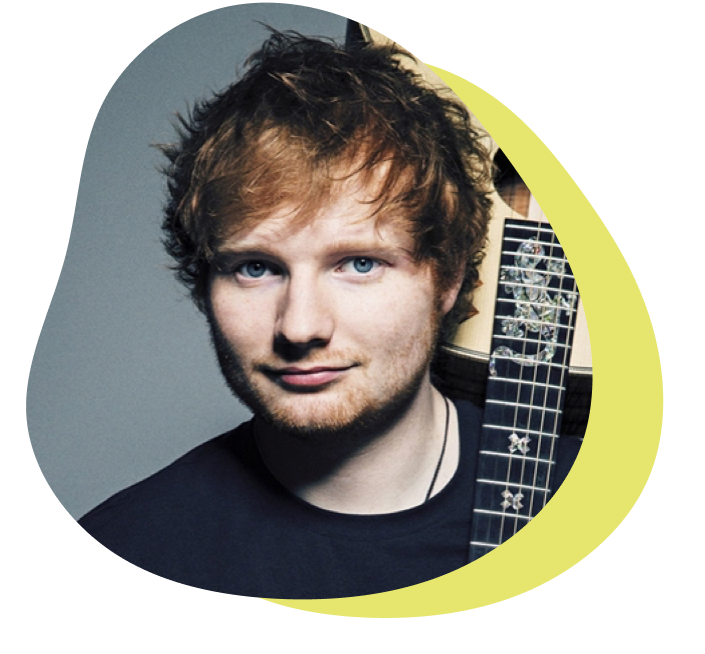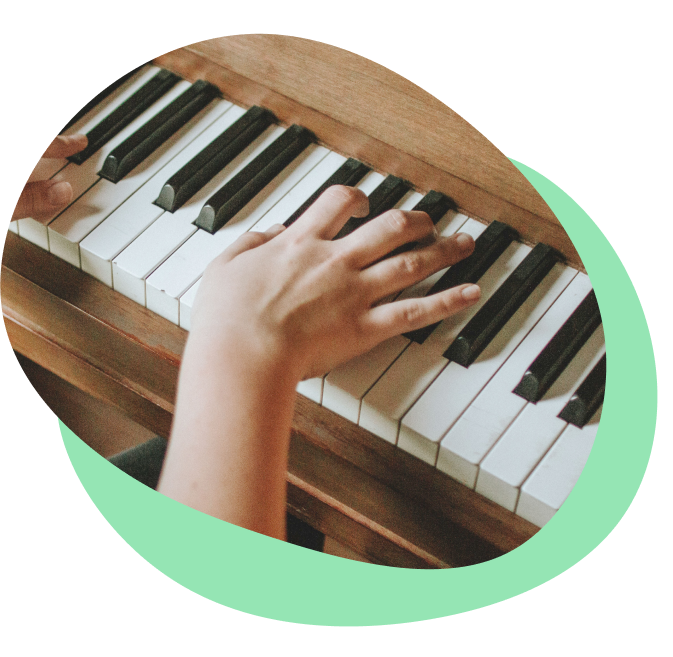Learning to play the piano is an exciting journey and as you progress, introducing pedal technique becomes a crucial step in shaping your sound. Pedals allow you to connect melodies, support harmonies and bring greater expressiveness to your playing. They can make even simple pieces sound resonant and impactful. Skoove has created this beginners guide to help you get to grips with them. Let’s dive into the world of piano pedals and how to use them.
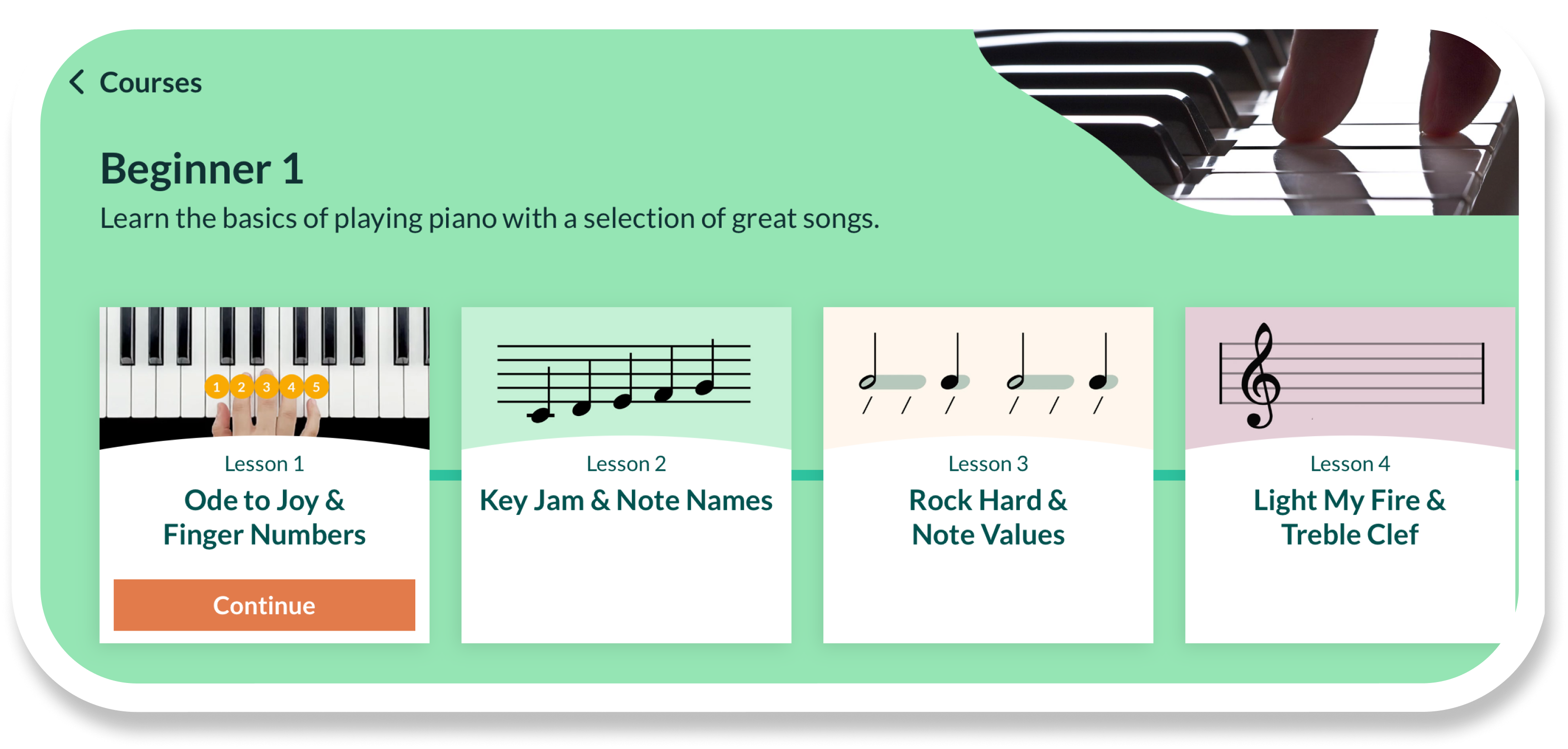
What do the pedals on a piano do?
You might be wondering, what are the pedals on a piano for? Piano pedals allow you to control your articulation, timbre and what happens to notes after you play them. You can control how long piano notes ring, how soft or loud they feel and how seamlessly musical ideas transition. In short: pedals help you play piano with more expression.
Types of pedals on piano
The three types of piano pedals we will be looking at in this article will be the sustain pedal, the soft pedal and the sostenuto pedal. Some pianos have all three of these and some have none, such as MIDI piano which require you to plug one in. Be sure you check your piano before you put this knowledge into practice.
1. Sustain pedal (right pedal)
The sustain pedal is the pedal most often used by beginners and professionals alike. Usually located on the right, it lets notes ring out after you’ve lifted your fingers from the keys. This simple action gives music a warm, flowing quality, ideal for ballads or lyrical pieces.
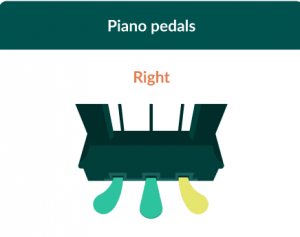
A key piano technique for clean pedaling is to press the sustain pedal immediately after you’ve played a chord, rather than at the exact same moment. As you move to a new harmony or chord, briefly lift the pedal and press it down again in a smooth, swift motion. This quick release-and-repress action prevents overlapping chords from running into each other and helps keep your piano chords sounding clear and controlled.
Steps to play the sustain pedal
Follow these simple steps to get to grips with the sustain pedal.
| 1️⃣ | Play your chord. |
| 2️⃣ | Immediately press the pedal down. |
| 3️⃣ | Hold as the chord rings. |
| 4️⃣ | Briefly lift and re-press as you change chords. |
With careful coordination, you’ll notice your playing becomes more expressive and blends more. Have a go at putting this into practice with Beethoven’s Für Elise.
Learn how to play ‘Für Elise’ by Ludwig van Beethoven. Start a 7 day trial today – no card details required!
2. Soft pedal (Una Corda, left pedal)
The left pedal, known as the una corda, is powerful for adding subtlety and nuance to your piano playing. Unlike the sustain pedal, which affects how long notes ring out, the una corda changes the very color and texture of your tone making it quieter and more delicate. This tonal shift allows you to create contrast within a piece, giving dynamic variety and emotional depth without changing your tempo or touch.

On a grand piano, the una corda pedal physically shifts the keyboard slightly so that the hammers strike fewer strings. Upright pianos achieve a similar effect by reducing the force of the strike and thus the volume and brightness of the notes. Both mechanisms provide pianists with a valuable way to control dynamics and timbre.
Steps to play the soft pedal
Follow these simple steps to get to grips with the soft pedal.
| 1️⃣ | Press before playing a quiet section. |
| 2️⃣ | Pay attention to the subtle shift in tone. |
| 3️⃣ | Release it to return to the normal sound. |
You can practice using the soft pedal on Skoove’s arrangement of the traditional melody‘Greensleeves’.
Learn how to play ‘Greensleeves’ on piano. Start a 7 day trial today – no card details required!
3. Sostenuto pedal (middle pedal)
The sostenuto pedal is often the most subtle and least frequently used of the three pedals, however it offers some very unique expressive possibilities. The sostenuto pedal sustains only the specific piano notes you are holding at the moment you press it, this allows you to freely play other notes without sustaining them. This selective sustain feature lets you create layers within your music e.g. holding a bass note or chord while your hands move independently on top with the melody.

Not all pianos include a true sostenuto pedal, sometimes the middle pedal serves a different function, such as a practice pedal that muffles the overall volume for quiet playing.
Steps to play the sostenuto pedal
Follow these simple steps to get to grips with the sostenuto pedal.
| 1️⃣ | Play and hold the notes you want to sustain. |
| 2️⃣ | Press the pedal, then let go of those keys. |
| 3️⃣ | Those notes keep ringing while you play others above. |
How to read pedal notation?
Most sheet music uses simple visual cues under the staff to indicate pedal use. A solid, continuous line signals when to press and hold the pedal, while a break or gap shows when to lift it.

You might also see the abbreviation “Ped.” marking the pedal down point and an asterisk (*) indicating when to release.
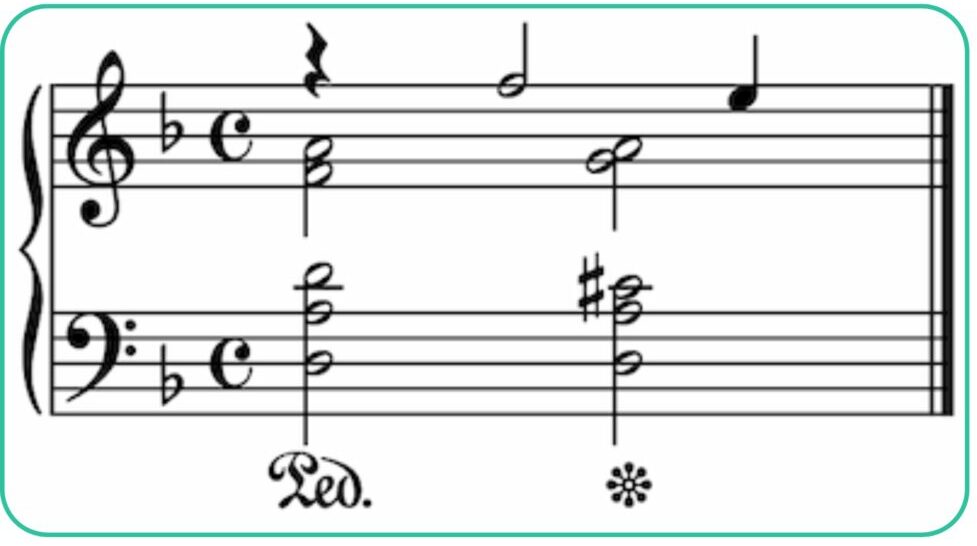
These markings provide a clear starting point, especially for beginners, but as you gain experience, it’s important to trust your ear and musical intuition to adjust pedaling for phrasing and expression beyond the written instructions.
This notation means push down the sustain pedal and lift it each time the line is broken. In notated music, it looks like this:

Top tips to improve your pedal technique
- Practice proper pedaling technique: A good starting point is to keep your heel firmly planted on the floor while applying gentle pressure with the ball of your foot. This allows for smooth and controlled pedal movements.
- Be gentle with the pedals: Avoid pressing or releasing the pedal abruptly, as sudden stomps can create unwanted noise or disrupt the flow of the music.
- Pay attention to pedal phrasing: It’s essential to coordinate your pedal work with your hand movements; well-timed pedaling ensures your transitions between chords and harmonies sound seamless and musical.
- Keep your pedaling in time: Developing this coordination early sets a strong foundation for more advanced expressive techniques as you progress.
- Don’t over-pedal: Too much pedaling can make your playing sound muddy, be sure not to over use your pedals. Pay attention to where pedaling is notated in sheet music.
- Learn to play legato without the pedal: Do not rely too much on pedaling to smooth out your playing. Learn to play legato and then use the pedal to enhance your playing.
Start using piano pedals like a professional
Now you have discovered the piano pedals functions and the massive impact they can have on your playing, as well as how to use them and read their notations in sheet music, it’s time to take things to the next level. Skoove is here to guide you through all your favorite songs and now you can add the magic of piano pedals to bring your playing to the next level. Be sure to follow all the tips in this article and use Skoove to guide you along the way. Keep up the good work and happy pedaling!
Author of this blog post:
Alvin Shipp

Published by the Skoove team



